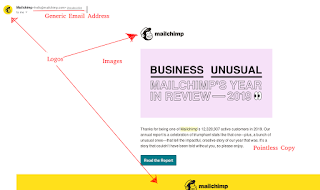What is the difference between warm and cold email?

It turns out, almost everything. They may follow a lot of the same underlying ideas but there's several differentiators that set them apart.
The most obvious is that they serve completely different purposes. A warm email can be used to educate, get clicks, or to achieve a variety of inbound marketing goals. A cold email is meant to get a reply from someone you've never met and hopefully get them to do business with you.
Cold and warm email also look a lot different. Warm inbound email looks promotional and professionally made by design, typically using HTML elements and images that communicate professionalism and reinforce the perception of your product or service as being well established.

Most people won't look at a warm marketing email and think "this was made and sent to me personally." They know its automated - and that's okay for warm inbound mail - but with cold email its a deal breaker. If you send a promotional message like that to someone who has never heard of you or your company before they will mark you as spam and they'll never hear from you again.

The best cold emails make people think you actually wrote them a personal email, usually in plain text, but definitely more about them than about you - which is doable en masse if you segment properly.
The best cold emails make the reader think you actually wrote them a personal email.
It's important to clarify the difference between a warm and cold email automation platform. At first glance, most people think it has to do with segmentation abilities, HTML messages, etc but warm and cold email platforms are separated by one defining characteristic - and that's whether or not they allow you to send unsolicited mail.
Why don't Mailchimp, Hubspot, and other inbound marketing platforms let you send cold email?
It all comes down to sender reputation. Simply put, when you use Mailchimp or Hubspot you are using their email servers and everyone on their servers shares the same sender IP address (a component of sender reputation). That means if someone reports your email as spam on Mailchimp, it impacts the reputation (inbox deliverability) of all of their other customers. So they take extra steps and extra rules to prevent their users from accumulating spam reports, such as prohibiting unsolicited emails on their platform.
Platforms like Reply, Lemlist, and Mailshake that are built and marketed for cold email don't use shared IP addresses. That means if you send automated email from their platform you are still using your own domains and IP addresses and your reputation is yours and yours alone. So while you can't leverage the reputation of a community of reputable email marketers like you could with Mailchimp, you won't get kicked off the platform for sending unsolicited mail and lose all of your progress.
Your spam reports impact only you, so they let you send outbound mail!
So there you have it - the three big differences between Warm and Cold Emails are
1) They serve different goals. Warm emails are meant to educate and sell to current or old leads while cold emails are meant to win new business
2) Cold emails are meant to look like personal 1-to-1 emails whereas marketing emails can be more promotional and include images.
3) They're generally sent from different platforms and it's not unusual for marketers that use both to use separate tools for each one.

